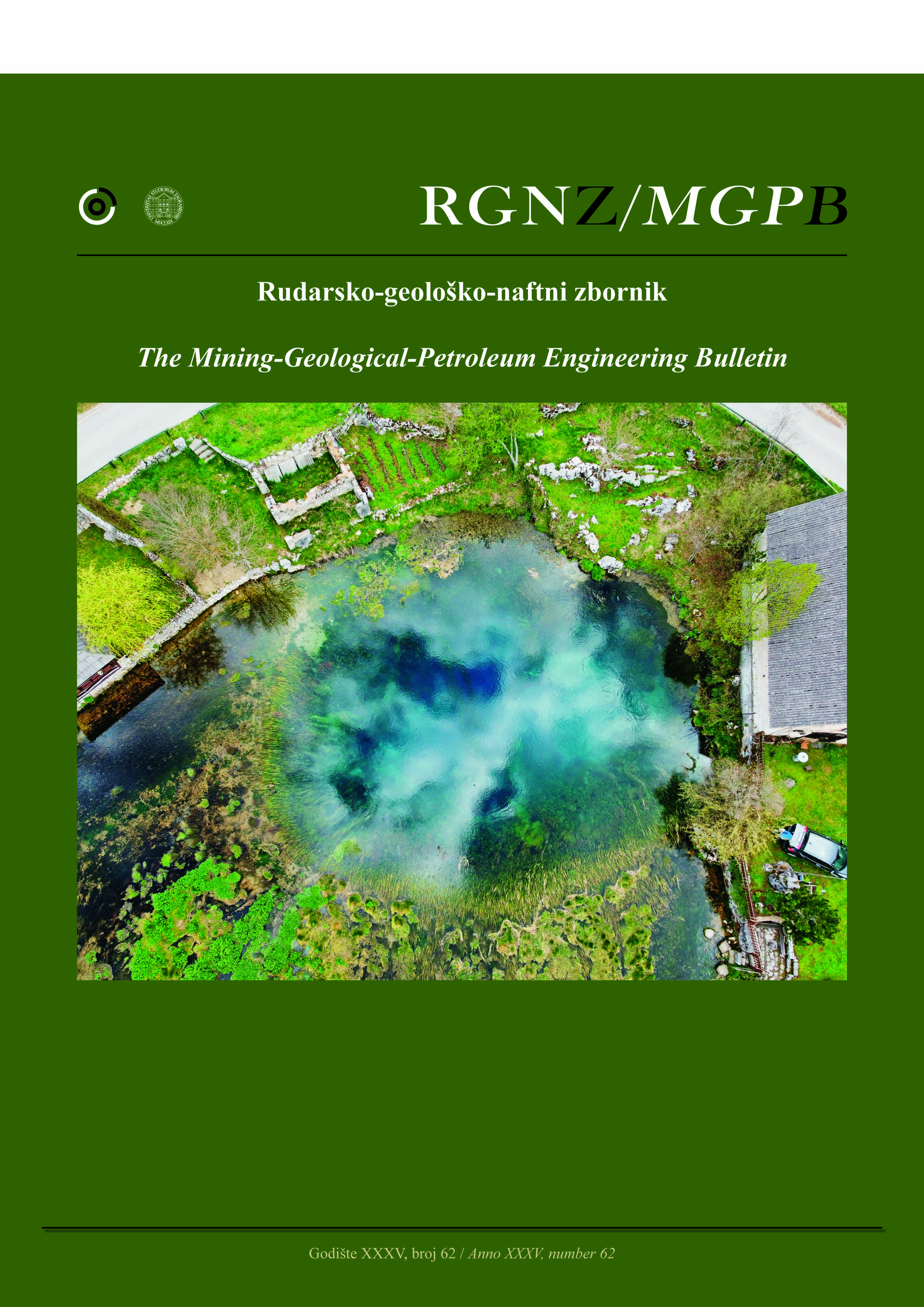Sea surface paleoproductivity reconstruction based on foraminiferal accumulation rate in the western Savu Strait since the Last Glacial Maximum (~23 ka BP)
DOI:
https://doi.org/10.17794/rgn.2023.1.14Keywords:
Australian-Indonesian monsoon, foraminiferal accumulation rate, Indonesian Throughflow; paleoproductivity, Savu StraitAbstract
Despite its importance, sea surface paleoproductivity of the western Savu Strait is not well studied. Results from previous studies at the nearby Southwest Sumba and Sumba Strait might not be applicable due to the oceanographic difference. Foraminiferal proxies from gravity core ST10 were applied to generate sea surface paleoproductivity and thermocline depth reconstruction. Foraminiferal Accumulation Rate and Benthic Foraminiferal Accumulation Rate were used as paleoproductivity proxies while the thermocline dwellers’ relative abundance was applied as the thermocline depth proxy. This study suggested paleoproductivity increase during the Last Glacial Maximum (LGM)–~16 ka BP and Holocene (after ~11.65 ka BP) in the western Savu Strait. Thermocline depth was relatively shallower during the LGM–Last Deglaciation and became deeper afterwards. Paleoproductivity increase at LGM–~16 ka BP was caused by the Australian-Indonesian winter monsoon (AIWM)-like condition, characterized by intense coastal upwelling while the Holocene paleoproductivity increase was related to the abrupt rainfall increase which enhanced terrestrial/riverine input. Thermocline depth variability in the western Savu Strait is in-phase with thermocline depth variability in the Java upwelling region, characterized by a shallower thermocline during the LGM–Last Deglaciation (before ~11.65 ka BP) and a deeper thermocline during the Holocene (after ~11.65 ka BP). This thermocline depth shifting indicates a strong Australian-Indonesian Monsoon (AIM) influence on the paleoceanography of the western Savu Strait since LGM.
Downloads
Additional Files
Published
How to Cite
Issue
Section
License
Copyright (c) 2023 authors

This work is licensed under a Creative Commons Attribution 4.0 International License.
Creative Commons-BY
Authors who publish with this journal agree to the following terms:
In agreeing this form, you certify that:
- You read the ethical codex of the RGN zbornik available at journal web.
- You submitted work is your original work, and has not previously been published and does not include any form of plagiarism.
- You own copyright in the submitted work, and are therefore permitted to assign the licence to publish to RGN zbornik.
- Your submitted work contains no violation of any existing copyright or other third party right or any material of an obscene, libellous or otherwise unlawful nature.
- You have obtained permission for and acknowledged the source of any illustrations, diagrams or other material included in the work of which you are not the copyright owner.
- You have taken due care to ensure the accuracy of the work, and that, to the best of your knowledge, there are no false statements made within it.
- All co-authors of this submitted work are aware of, and in agreement with, the terms of this licence and that the submitted manuscript has been approved by these authors.
Publication licence
You retain copyright in your submitted work, according to journal license policy (CC-BY). By signing this form you agree that RGN zbornik may publish it under the publication licence. In summary the licence allows the following:
Anyone is free:
- To copy, distribute, display, and perform the work.
- To make derivative works.
Under the following conditions:
- The original author must always be given credit.
- The work may not be used for commercial purposes.
- If the work is altered, transformed, or built upon, the resulting work may only be distributed under a licence identical to this one.
Exceptions to the licence
In addition to publishing the work printed under the above licence, RGN zbornik will also enable the work to be visible online.
The journal editorial can change the licence rules anytime but it cannot retroactively restrict author(s) rights.


